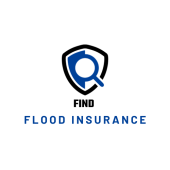Flooding is one of the most common and costly natural disasters, affecting millions of people worldwide each year. Whether you live near a coast, a river, or even in an urban area, understanding your flood risk is crucial for protecting your property and ensuring your safety. One of the most important questions homeowners ask is, “Do I live in a high-risk flood zone?” In this blog post, we’ll explore what it means to live in a high-risk flood zone, how to determine your flood risk, and what steps you can take to mitigate the impact of potential flooding.
 What is a High-Risk Flood Zone?
What is a High-Risk Flood Zone?
A high-risk flood zone, also known as a Special Flood Hazard Area (SFHA), is an area that has a significant chance of experiencing flooding. According to the Federal Emergency Management Agency (FEMA), a high-risk flood zone is an area that has a 1% or greater chance of flooding in any given year. This is often referred to as a “100-year flood” zone, meaning there’s a statistical likelihood of a flood occurring once every 100 years. However, this does not mean that flooding will only happen once in a century—multiple floods can occur within a short period.
FEMA classifies flood zones using a series of letters, with high-risk zones typically labeled as Zone A or Zone V. Zone A includes areas near rivers, lakes, and other inland water bodies, while Zone V includes coastal areas that are vulnerable to storm surges and high waves. Within these broad categories, there are further distinctions that indicate the specific type of flood risk.
How to Determine if You Live in a High-Risk Flood Zone
- Use FEMA’s Flood Map Service Center
One of the easiest ways to determine if you live in a high-risk flood zone is by using FEMA’s Flood Map Service Center. This online tool allows you to enter your address and view the flood map for your area. The map will show you whether your property is in a high-risk zone and provide detailed information about the specific risks in your location. - Consult Your Local Government
Local governments often have detailed flood maps and additional information about flood risks in your area. They can provide insights into historical flooding events, planned infrastructure improvements, and other factors that might affect your flood risk. Many municipalities also offer flood risk assessments as part of their building permit process. - Review Your Property’s Elevation
The elevation of your property relative to nearby water bodies can significantly impact your flood risk. A property located on a hillside or a ridge is less likely to flood than one in a low-lying area. You can obtain an Elevation Certificate from a licensed surveyor to determine your property’s elevation and how it compares to the base flood elevation (BFE) for your area. The BFE is the level at which there is a 1% chance of flooding in any given year. - Check with Your Insurance Provider
Insurance companies often have detailed data on flood risks and can help you determine if your property is in a high-risk zone. If you are required to carry flood insurance as part of your mortgage, this is a strong indication that your property is in a high-risk area. Even if flood insurance is not required, it’s worth asking your insurer about the flood risk to make an informed decision.
Why It Matters if You Live in a High-Risk Flood Zone
Living in a high-risk flood zone has several implications, both financially and for your personal safety. Here’s why it matters:
- Flood Insurance Requirements
If your property is in a high-risk flood zone and you have a mortgage from a federally regulated or insured lender, you are required to carry flood insurance. This insurance can be costly, depending on the level of risk, but it’s essential for protecting your home and belongings in the event of a flood. Even if you’re not in a high-risk zone, purchasing flood insurance might still be a wise decision, as flooding can happen in lower-risk areas too. - Property Value and Resale Considerations
Properties in high-risk flood zones can be more challenging to sell and may have lower market values due to the increased risk of flooding. Potential buyers may be deterred by the requirement to purchase flood insurance and the potential for future flood damage. If you plan to sell your property in the future, being in a high-risk zone could affect your resale value and the pool of interested buyers. - Impact on Safety and Peace of Mind
Flooding can pose serious risks to personal safety, especially if it occurs rapidly or without warning. Knowing that you live in a high-risk zone can help you take necessary precautions, such as creating an emergency evacuation plan, investing in flood barriers, or elevating critical utilities above the base flood elevation. While living in a high-risk area doesn’t guarantee flooding, being prepared can significantly reduce the potential impact on your life and property.
Steps to Mitigate Flood Risk
Even if you live in a high-risk flood zone, there are steps you can take to mitigate the risk and protect your property:
- Elevate Your Home
Raising your home above the base flood elevation can significantly reduce the risk of flood damage. This can be an expensive undertaking, but it might lower your flood insurance premiums and increase the safety of your home. - Install Flood Barriers and Seals
Flood barriers, such as sandbags or permanent flood walls, can help keep water out of your home. Additionally, sealing any cracks or openings in your foundation and walls can prevent water from seeping in during a flood. - Create a Flood Emergency Plan
Having a plan in place can save lives and reduce damage. Make sure everyone in your household knows what to do in the event of a flood, including where to go and how to protect important documents and belongings. - Maintain Proper Drainage
Ensure that your property has proper drainage systems in place to direct water away from your home. Clean gutters, install French drains, and consider landscaping changes that promote water flow away from your foundation.
Conclusion
Determining whether you live in a high-risk flood zone is a critical step in protecting your home and your loved ones from the dangers of flooding. By using tools like FEMA’s Flood Map Service Center, consulting local resources, and taking proactive steps to mitigate risk, you can better prepare for the possibility of flooding. While living in a high-risk area presents challenges, awareness and preparation are key to minimizing the impact of floods on your property and your life.



